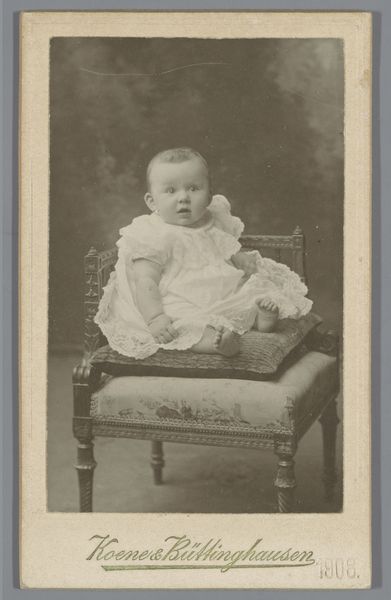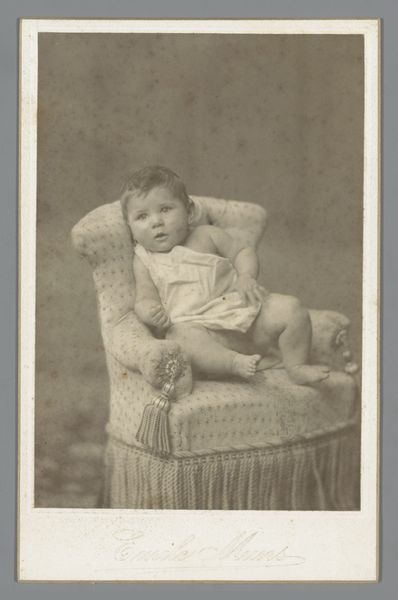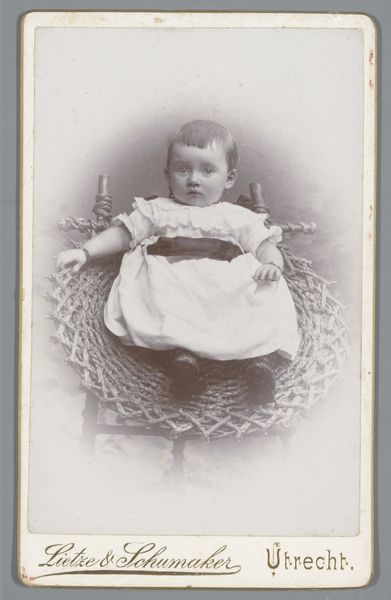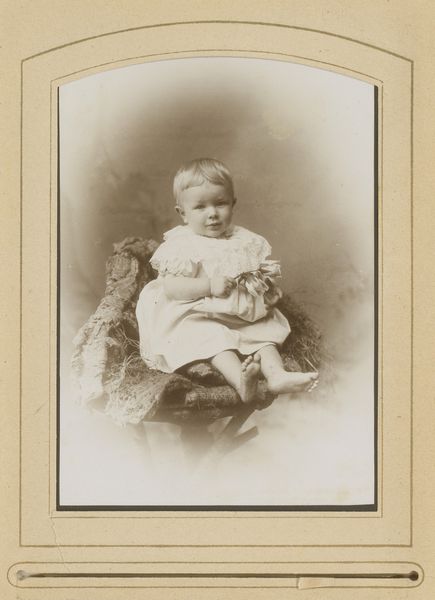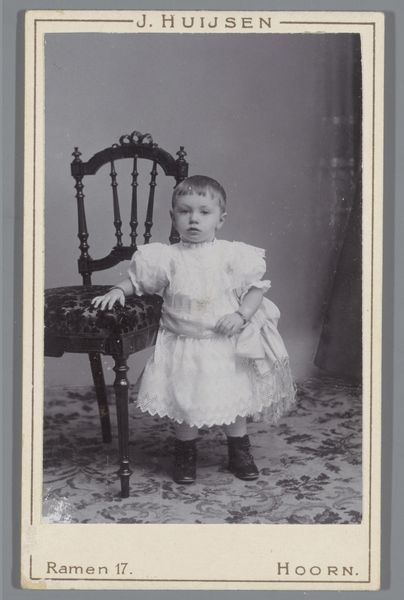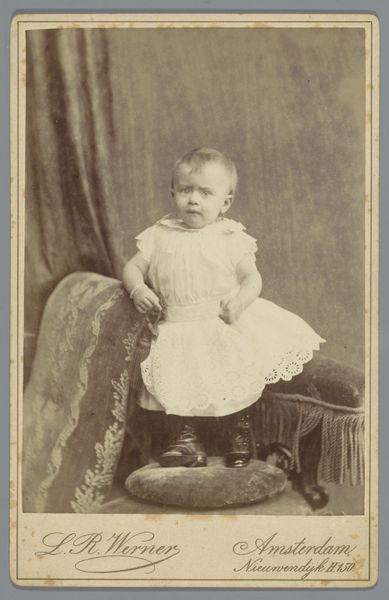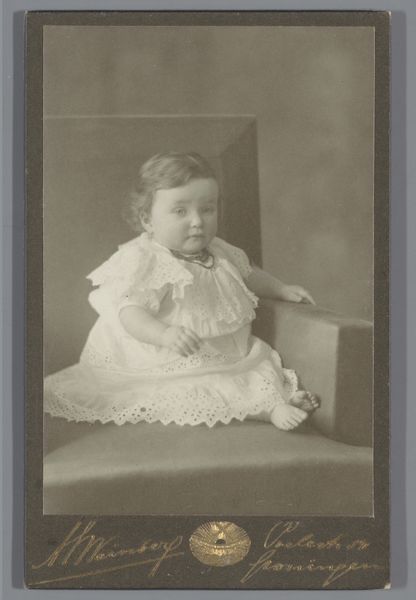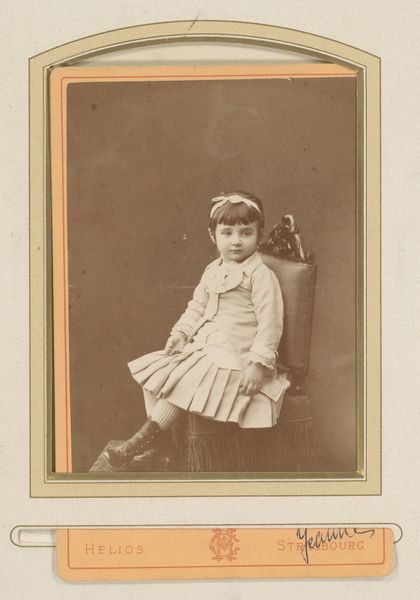
photography, gelatin-silver-print
#
portrait
#
studio photography
#
aged paper
#
photography
#
framed image
#
gelatin-silver-print
#
19th century
Dimensions: height 104 mm, width 65 mm
Copyright: Rijks Museum: Open Domain
Editor: So, here we have "Portret van Willem Jonker," taken around 1899-1900 by Koene & Büttinghausen. It’s a gelatin-silver print – what strikes me is how formally composed it is, even for a child. What's your take on this photograph? Curator: What immediately draws my attention is the construction of childhood innocence. Look at how the child is posed, almost miniature adult-like formality in an elaborately decorated chair. We must remember photography at this time was far from casual. These images played a significant role in constructing family and social identity. Who do you think this portrait was intended for? Editor: Perhaps for the family archive? To be shared with relatives? It seems like such a deliberate image. Curator: Precisely. These photographs helped families perform their roles, displaying wealth and social standing. The ornate chair, the child’s dress, the photographic studio itself, all contribute to a narrative crafted for public consumption and the maintenance of class structures. It is also very common at this time, photography studios were popping up all over major cities. Editor: I hadn’t considered that aspect of display so directly. It’s fascinating to think about how studios were participating in the shaping of the collective identity, making images that were in high demand. Curator: It also prompts reflection on access. Who had the privilege to commission such portraits? This image then is more than just a charming child. It offers a glimpse into a very specific segment of society. Editor: That makes me see the image so differently. It's less about a personal moment and more about participation in social presentation. Thank you for this, I feel that this discussion gave me valuable tools on how to look at this work more thoroughly.
Comments
No comments
Be the first to comment and join the conversation on the ultimate creative platform.

